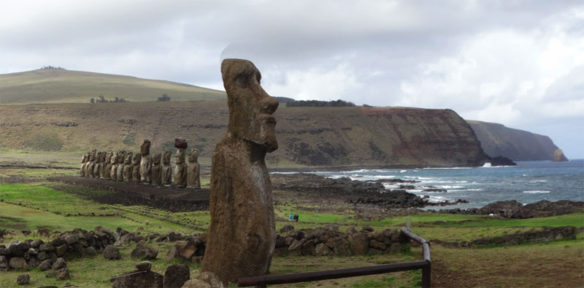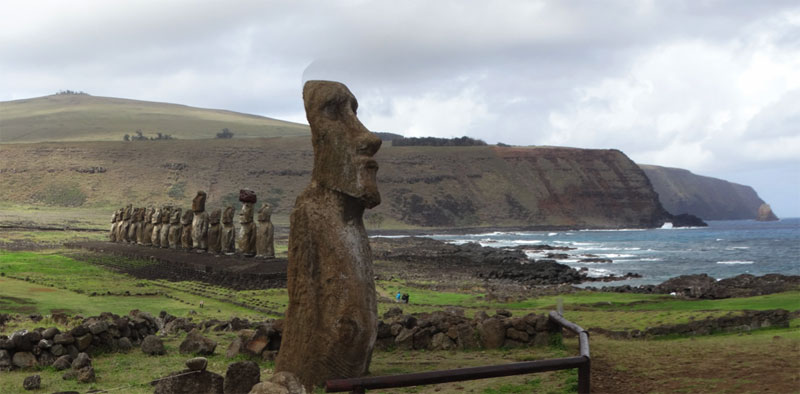
The island’s volcanic origin has generated kilometers of amazing rocky coastline, dominated by erosional features. Captions and photo courtesy of: © Nelson Rangel-Buitrago, William J. Neal & Adriana Gracia
Excerpts;
Social activists and local authorities in Rapa Nui or Easter Island are calling for urgent action to address rising sea temperatures, declining rainfall, and rising tides that threaten their fishing resources and their Moais, the mysterious volcanic stone monoliths.
On this island in the Polynesia region of the Pacific Ocean, 3,800 kilometers from the coast of Chile, to which it belongs, the effects of climate change are already evident.
Ludovic Burws, a teacher at the Hanga Roa Educational Village, the island’s primary and secondary school, says that with “rising water temperatures some corals are beginning to bleach” on the shores of Rapa Nui…
Read Full Article; IPS News (02-14-2019)
Easter Island is critically vulnerable to rising ocean levels; The New York Times (03-15-2018))
Te Pito O Te Henua shore (Rapa Nui or Easter Island): a remote and mysterious place with rare beaches; By Nelson Rangel-Buitrago, William J. Neal & Adriana Gracia (03-01-2018)
One of the most remote and youngest inhabited volcanic islands in the world is Te Pito o Te Henua Island, or as more commonly known: Easter Island (Rapa Nui or Isla de Pascua). World famous for its mysterious monumental statues (moai) erected by the early Rapa Nui people, the island is located in the southeastern Pacific Ocean nearly 3,650 km west of Chile…
Solving the ancient mysteries of Easter Island; Science Daily (01-10-2019)
The ancient people of Rapa Nui (Easter Island, Chile) built their famous ahu monuments near coastal freshwater sources, according to a team of researchers…









